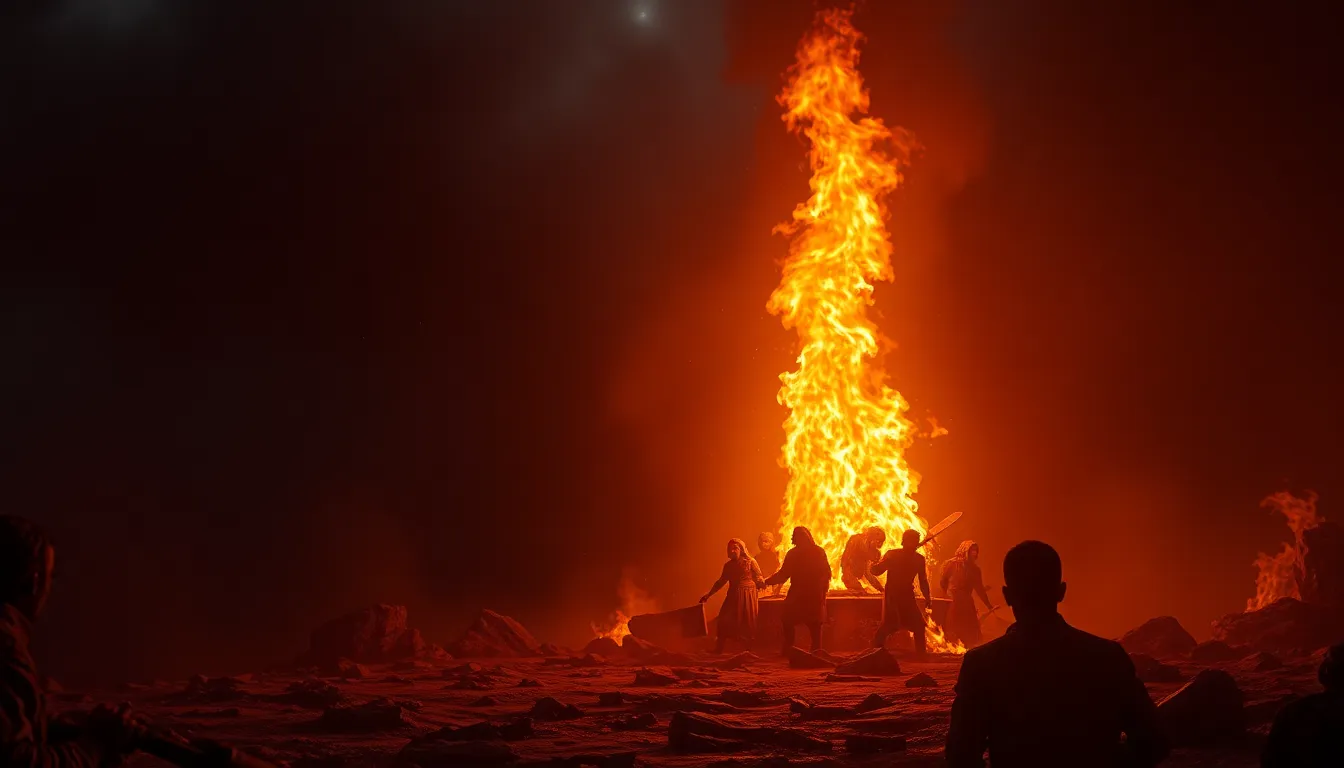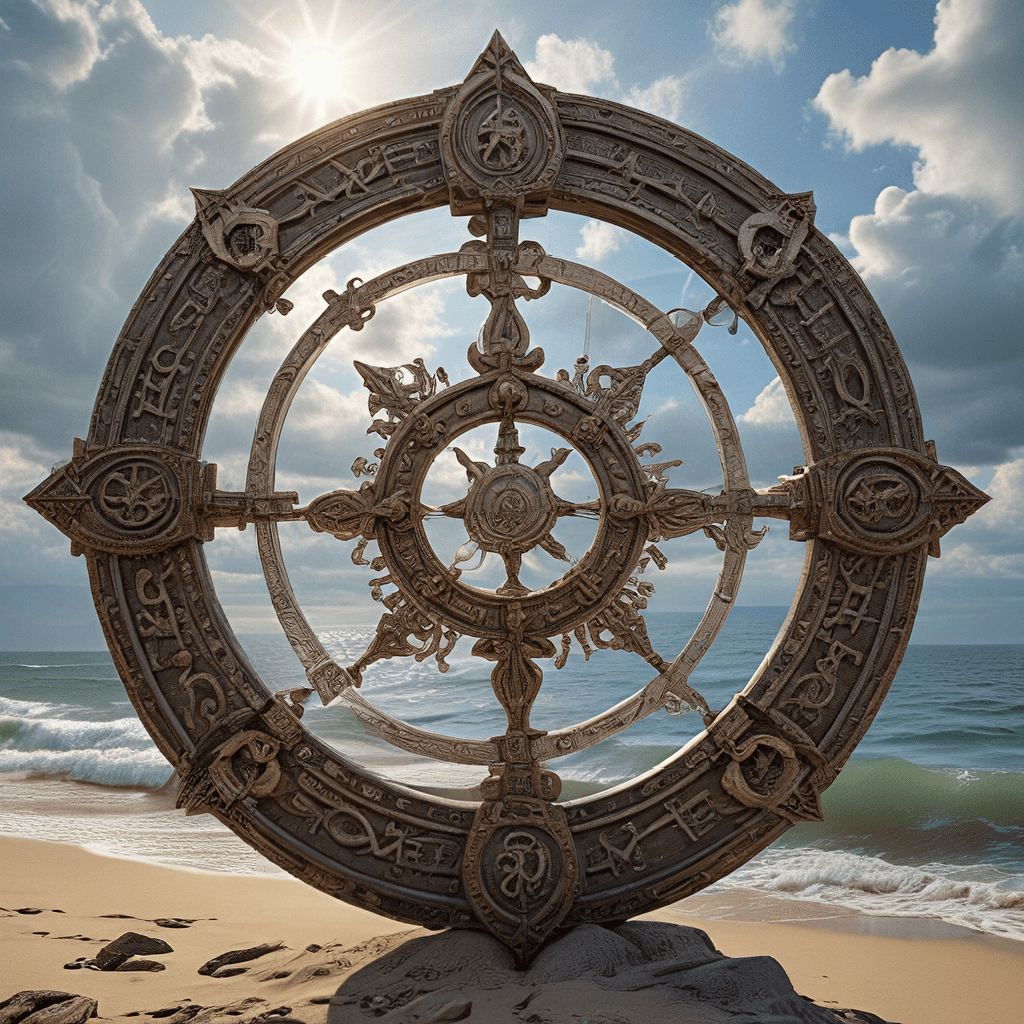The First Flame: How Creation Myths Ignite Our Passion
I. Introduction: The Spark of Creation Myths
Creation myths are fundamental narratives that attempt to explain the origins of the world, humanity, and the universe. These stories often incorporate elements of the divine, nature, and human experience, and they serve as a framework for understanding existence.
Throughout history, myths have held a crucial position in human culture, providing answers to existential questions and shaping worldviews. They encapsulate the beliefs, values, and practices of communities, reflecting their collective identities.
In this exploration, we will delve into how creation myths not only narrate beginnings but also ignite passion and purpose in individuals and societies. By examining their roles across cultures, symbolism, psychological impacts, and relevance in modern society, we will uncover the flames of inspiration that these ancient tales can spark.
II. The Role of Creation Myths in Different Cultures
Creation myths have existed in various forms across cultures for millennia. They are often the first stories told to children and serve as foundational elements of cultural identity.
A. Brief history of creation myths across cultures
- Judeo-Christian traditions: The Book of Genesis describes God creating the world in six days.
- Hindu traditions: The Rigveda presents multiple accounts, including Vishnu’s cosmic dream.
- Indigenous myths: Many Native American cultures have rich oral traditions explaining creation through natural elements.
B. Comparative analysis of major creation myths
While the specifics of creation myths differ widely, they share common threads, such as the emergence of order from chaos or the role of a creator deity. For instance:
- In Judeo-Christian narratives, God’s word brings forth creation.
- In Hindu myths, the cosmic ocean is stirred to bring forth creation.
- Indigenous myths often depict the earth as birthed from a primordial being.
C. Cultural significance and variations in storytelling
These myths are not static; they evolve through retellings, adapting to contemporary contexts while maintaining their core messages.
III. Symbolism and Themes in Creation Myths
Creation myths are rich in symbolism and thematic elements that resonate deeply with human experiences.
A. Common symbols found in creation myths
- Light and darkness: Often symbolize knowledge versus ignorance.
- Water: Represents chaos and the potential for life.
- Earth: Symbolizes stability and nurturing.
B. Thematic elements
Recurring themes such as chaos versus order and the struggle for existence highlight the universal human experience of seeking meaning amidst uncertainty.
C. How these themes resonate with human experiences
These themes often mirror our journeys through life, providing comfort and context in times of turmoil.
IV. The Psychological Impact of Creation Myths
Creation myths have profound psychological implications, influencing our understanding of self and existence.
A. Theories on myth and psychology
Carl Jung’s concept of archetypes suggests that these stories tap into the collective unconscious, presenting universal symbols that shape our identities.
B. Creation myths as tools for understanding identity and purpose
They serve as mirrors reflecting our struggles and triumphs, helping us navigate our personal quests for meaning.
C. The emotional response to creation narratives
These narratives evoke a range of emotions, from awe to fear, and they connect us to our humanity.
V. Creation Myths and the Human Experience
The relationship between creation myths and existential questions is deep-rooted, influencing our understanding of life and death.
A. Connection between myths and existential questions
Questions such as “Why are we here?” and “What is our purpose?” are often addressed through these narratives, offering frameworks for understanding.
B. How creation stories inform our understanding of life and death
Many myths provide narratives about the afterlife, moral conduct, and the cyclical nature of existence, shaping our beliefs about mortality.
C. The role of myths in shaping moral frameworks and ethics
These stories often impart lessons on morality, guiding ethical behavior and societal norms.
VI. The Power of Storytelling in Creation Myths
Storytelling is an art form that plays a significant role in the transmission and preservation of creation myths.
A. The art of storytelling and its impact on culture
Through engaging narratives, cultures can convey intricate ideas and values, making them accessible to all.
B. Oral traditions vs. written texts
Oral traditions allow for flexibility and evolution, while written texts provide permanence and widespread dissemination of myths.
C. The role of narrative in igniting passion and inspiring action
Compelling stories can inspire movements, motivate individuals, and ignite collective passion for change.
VII. Creation Myths in Modern Society
Ancient myths continue to resonate in contemporary life, adapting to new contexts and mediums.
A. The relevance of ancient myths in contemporary life
Many modern narratives borrow elements from traditional myths, reflecting ongoing human concerns and aspirations.
B. Adaptations of creation myths in literature, film, and art
Contemporary adaptations often reinterpret these myths, allowing new audiences to engage with ancient stories.
C. How modern storytelling reinterprets traditional myths
This reinterpretation can inspire new generations to find passion and purpose in their lives.
VIII. The Intersection of Science and Creation Myths
The dialogue between science and creation myths is a fascinating area of exploration, where narratives and empirical evidence intersect.
A. Myths versus scientific explanations of creation
The Big Bang Theory and evolution provide scientific frameworks for understanding origins, often contrasting with mythological narratives.
B. The dialogue between science and spirituality
Many individuals find ways to reconcile scientific discoveries with spiritual beliefs, illustrating the coexistence of these narratives.
C. How myths can coexist with scientific narratives
Creation myths can inspire curiosity and inquiry, prompting exploration into both scientific and philosophical realms.
IX. Personal Reflections: Finding Passion through Creation Myths
Ultimately, creation myths offer personal connections that can illuminate our paths.
A. How individuals connect with creation myths personally
Many people find solace and inspiration in these stories, drawing parallels to their own lives.
B. Case studies of people inspired by creation narratives
- An artist inspired by the chaos and order of creation to create evocative works.
- A leader who draws on mythological themes to motivate and unite people.
Through these examples, we see how creation myths continue to resonate, igniting passions that drive individuals towards their destinies.



